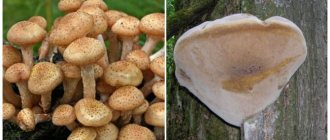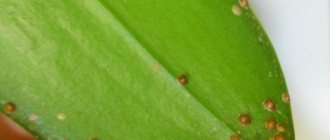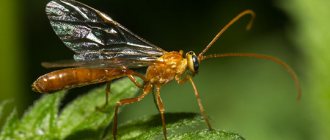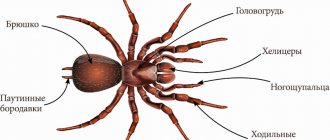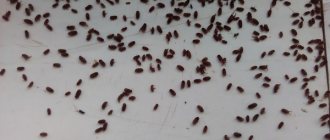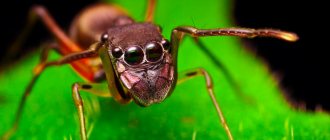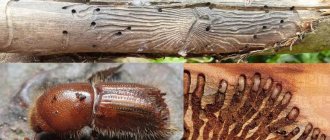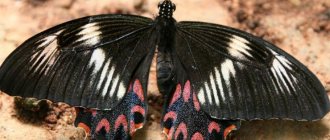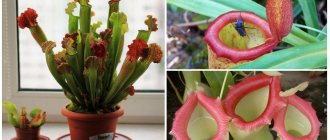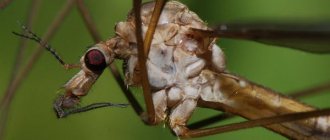Last updated - March 1, 2021 at 01:25
Reading time: 5 min
Mushrooms belong to a separate kingdom, since they combine the properties of both plants and animals. They play a large role in the natural processes of the biosphere.
There are a huge number of species in the world. But the article will talk about parasitic ones. They cause harm to the organism on which they settle, and then the host dies due to lack of nutrients.
We will find out which fungi are parasites and which plants they can parasitize. What mushrooms look like, in general, everything about mushrooms.
General concepts
A parasitic fungus is completely dependent on its host, which ensures its existence. But at the same time, it gradually exhausts the host, so such organisms are considered a weakened form of predation. Plants and other organisms affected by parasitic fungi can live with them for many years. Their lifespan depends on the type of “settlers” and the characteristics of the owner. Thus, hardwood trees can live with such parasites for decades, while, for example, a poplar can die in a few years.
The distribution zone of these organisms is not limited to vegetation. There are fungi that are parasitic to humans and can cause very serious illnesses. They require timely treatment as they can lead to serious consequences. There are also plant parasitic fungi that attack various types of crops.
It is possible to defeat parasites!
Antiparasitic Complex® - Reliable and safe removal of parasites in 21 days!
- The composition includes only natural ingredients;
- Does not cause side effects;
- Absolutely safe;
- Protects the liver, heart, lungs, stomach, skin from parasites;
- Removes waste products of parasites from the body.
- Effectively destroys most types of helminths in 21 days.
There is now a preferential program for free packaging. Read expert opinion.
Read further:
Fungi parasites of cereal plants: representatives, life cycle
Fungi parasites of plants: representatives, life cycle of development
The importance of parasites in nature: the role of parasitic worms, fungi and bacteria
Fungi parasites of animals: representatives, life cycle of development
Fungi parasites of humans: representatives, life cycle of development
Pathogenic fungal spores: detection and destruction on nails
Types of parasitic fungi
Parasitic fungi are divided into two types.
- Obligate fungi (smut, rust, powdery mushrooms), distinguished by their narrow specialization. They have a limited range of potential hosts. They consume only a specific set of essential nutrients. The lifespan of these parasites directly depends on the life activity of the host. That is why their relationships (development cycles) are coordinated. Moreover, by the time the host dies, the parasite has time to form overwintering spores. These fungi penetrate the plant using hyphae (thread-like formations) that resemble a spider's web. They infect the host through wounds, stomata, cuticle, and epidermis. The hyphae branch and move deeper into the plant along the intercellular spaces. During their life activity, such mushrooms secrete enzymes - pectinases. With their help, they destroy the intercellular substance of the host, clearing the way for organs in the plant tissue. With the help of special suckers - haustoria - they penetrate cells and absorb nutrients from them. Their peculiarity is that the plasma membranes do not die or collapse.
- Facultative parasitic fungi that are saprotrophs. They adopt this lifestyle only from time to time. They are the ones who most often lead to the death of their owner. Saprophytic fungi are both parasites and scavengers that feed on the remains of the organisms they have destroyed. They do not form haustoria. The host plant tissue is destroyed by fungal pectinases. They cause soft tissue rot. Their cellulase then dissolves the plant cell wall and absorbs its contents. Unfortunately, facultative parasitic fungi, examples of which can be given for a very long time, are not distinguished by their narrow specialization. For example, late blight affects almost all representatives of nightshades (potatoes, tomatoes, peppers).
Mushroom Nutrition: Key Features
There are certain nutritional features of mushrooms. They themselves are heterotrophs. This is what distinguishes them from other representatives of the plant world. Their diet is very varied. Mushrooms have 2 sources of food at once:
- organic substances (obtained from other animals or dead creatures);
- mineral elements (extracted from moisture).
It is worth noting that fungi play an important role in the processing of dead plants, since they are able to destroy the cellulose shell. Good food for mushrooms will be rotting roots, forest litter, animal corpses, and plant debris.
Forest mushrooms consume small pieces of food. They are unable to process portions that are too large. One of the characteristic features is the external digestive system. The fungal body secretes an enzyme that breaks down complex organic matter. Hydrolysis also contributes to this process.
It is interesting to note that for the fungus, carbon is not only a source of energy, but also an important part of the structure of cells. About half of the sugar that is processed is part of the structure of organisms that feed through the whole body. The environment contains a large number of different compounds and substances. The fungus absorbs, absorbs and processes them. As a result of vigorous activity, humus (fertile layer of soil) appears.
Variety of parasitic fungi
Fungi that are parasites of plants and other living organisms form an ecological group of almost 2000 species. Most of them belong to deuteromycetes and ascomycetes. Since these parasites interact differently with the body of their host, the relationship between them is divided into two groups of diseases.
- Mycoses that develop under the influence of direct parasitism of pathogenic microorganisms. They are divided into 2 groups. These include dermatomycoses that develop on the surface of the integument of a living organism, and deep (systemic) mycoses that affect internal organs.
- Mycotoxicoses, which are poisonings caused by the influence of toxins formed by pathogenic microorganisms. They can be caused by eating foods that have toxic fungi on them.
How do parasitic fungi enter the body?
Fungus is the same as mold. Its essence is that it gets on the human body, adapts to the environment and takes root like mold.
The fungus can live in the human body, on his body, for many decades, that is, for the entire human life.
Therefore, in the first moments of detecting the presence of a fungus, you need to immediately go to the doctor, get tested and begin treatment.
Fungi can enter the human body through:
- Water (drinking, running).
- Food (spoiled, unwashed).
If mold appears on the bread, you cannot eat it. Mold is not only on the surface, it penetrates deep into the bread. Therefore, even if you cut off the top layer where the mold was, you still cannot eat the bread itself.
- With air, dust (this is a dangerous method).
It enters the mucous membrane of the nose, throat, and, consequently, into the human body itself.
- With animal fur.
- Other untreated surfaces.
- Another man.
If a person has a fungus, then by contact with it, you can also become infected (through hugs, handshakes, bed). But if you have a wound on your body that is vulnerable to infection.
- You can independently spread different types of fungus on your body.
If you have a small infected area behind your ear, you rub it and with the same hands begin to touch your toes, and there is a cut or wound on them. Then the infection (fungus) will spread to the toes. This applies to all parts of the body.
Micro- and macroparasites
Parasitic fungi are divided into 2 main categories.
- Microparasites that reproduce inside the body of their host or in its cells. They belong to the class of chytridiomycetes. Found in algae, other fungi, invertebrate animals, and on the roots of land plants.
- Macroparasites that grow in the body of their host, but reproduce using special forms. Over time, they leave the host's body. This category includes representatives such as ascomycetes (for example, ergot), deuteromycetes, oomycetes (phytophthora), basidiomycetes (tinder fungus).
Smut mushrooms
A special place is occupied by parasitic smut fungi, the names of which are familiar only to specialists. These pathogenic microorganisms settle on higher plants. A parasitic fungus such as basidia tetracellata grows from a teliospore called smut, or chlamydospore. It has diokaryotic and intercellular mycelium. These parasitic fungi penetrate through the host's shoots. During sporulation, their mycelium breaks up into smut spores, which are dark in color. Plants affected by this parasite appear charred.
The spores of these parasites germinate in the spring. However, they can affect different parts of the plant. Over time, they divide reductionally, as a result of which promycelium is formed - basidia with spores. They have different gender characteristics. Smut fungi cause hypertrophy of plant tissues. They parasitize grain and cereal crops such as wheat, barley, oats, corn, and millet. Smut spores fall into the ground and onto grain during harvesting, and after spring sowing they actively develop on the young plant. They slow down the growth and reduce the yield of cereals by feeding on their juices. To prevent the appearance of these parasitic fungi, before sowing, planting material is treated with special preparations. In the wild, smut is also found on other plants of the cereal family.
Ergot
These parasitic fungi, the names of which are familiar to every farmer, parasitize rye and various wild cereals. Ergot is also called queen horns because of the characteristic curved, hard structures that develop on the flowers of the rye ear. These growths are sclerotia of the parasite, which are oblong or triangular plexuses of the mycelium. They are black and purple in color. In some cases, they become covered with an easily erasable whitish coating. Their size is up to 3 cm in length and up to 6 mm in width. Ergot sclerotia developing on different types of cereal plants may have a different shape and size. The ovary of a flower infected with spores is destroyed over time. Instead of grains, resting stages of the fungus are formed in the ear - sclerotia, which easily overwinter until spring.
Rust or onion mushrooms
These parasitic fungi are microorganisms that develop on above-ground plant organs. Most of them die when the plants die, but in nature there are also perennial species of these mycoses. So, some of them easily survive winter in their roots. Rust fungi have strands of mycelium that are located between host cells. They are found almost everywhere and can infect fern and flowering plants. These parasites have 5 stages of development, and they can coexist simultaneously on the same plant.
What is mycosis?
Mycoses are fungal diseases of animals, which are characterized by active parasitism of a pathogenic fungus in a living organism. Almost all species of animals are susceptible to mycoses. Some of them are dangerous to humans, especially children.
The group of mycoses includes: dermatomycosis (trichophytosis, microsporia, scab), aspergillosis, candidomycosis, coccidioidomycosis, epizootic lymphangitis, rhinosporidiosis, sporotrichosis, histoplasmosis, North American blastomycosis, cryptococcosis, mucoromycosis, saprolegniosis and branchiomycosis of fish, asp ergillosis, ascopheromycosis and melanosis of bees, silkworm muscardine.
The causative agents of mycoses are classified as lower and higher fungi, as well as actinomycetes. They are widespread in nature. In the body of animals they can cause a pathological process localized mainly in the skin, hair, respiratory organs, digestive tract, genitourinary organs and even brain tissue.
Mycoses are observed all year round, but more often in the winter-autumn period. Young animals are predominantly affected by mycoses. The development of the disease depends on the degree of pathogenicity of the pathogen, predisposing factors, the stability of the macroorganism and environmental conditions. Mycoses also arise as secondary diseases with damage to the respiratory system, against the background of dyspepsia and dysbiosis of young animals, caused by the influence of various drugs, especially antibiotics.
Fungi parasites of agricultural crops
In addition to ergot, rust and smut, which attack cereal crops, there are a huge number of fungi in nature that parasitize other agricultural plants. These include such dangerous diseases as late blight, fusarium, olpidium (“black leg”), powdery mildew, synchytrium (“potato cancer”), rot, botrytis, scab and many others. At the same time, they infect various types of crops, causing enormous damage to the national economy. Such parasitic fungi can develop on various parts of plants. Moreover, they affect not only annual vegetables, but also perennial shrubs and trees. Various fungicides are used to prevent and control fungal diseases. In some cases, treatment does not bring the expected result. In this case, plants affected by parasitic fungi are uprooted and burned. Sometimes it may be necessary to disinfect the soil with a furatsilin solution or heat treatment, since spores of some parasitic fungi can persist in the soil for a very long time.
Presentation – fungi are parasites of cultivated plants
Everyone observed drooping branches of apple trees, covered with white bloom and twisted, withered spikelets. All this is the result of an attack by saprophytes. This scourge causes enormous damage to gardeners, gardeners and agriculture, mainly in the cultivation of grain crops.
Fungi are plant parasites - methods of effective control and prevention
The main fungi parasites of cereals are smut, tinder fungus and ergot. It is these individuals that can cause terrible damage to crops, sometimes even completely destroying the crop. From time immemorial, people have been inventing methods to combat these parasites, but it mutates along with new drugs for destruction. Therefore, the struggle continues, with varying success.
In every country, laboratories are working to study the properties and characteristics of these parasites and are inventing more and more new drugs that can destroy it. In order to know how to defeat the enemy, you need to know all his features. Therefore, we will learn about these saprophytes in more detail and find out which method of combating them is the most effective.
Smut is the main enemy of cereal crops
At the beginning of August, golden fields of wheat and rye, oats and barley begin to emerge. Between the yellow swollen ears you can see blackened, as if charred plants. Upon closer examination, it turns out that the entire plant is covered with tiny black grains - this is the fungus parasite smut.
The parasite is very insidious, even if one grain gets into the seed during harvest, in the spring the fungus will begin to develop with a vengeance, affecting entire fields. The smut builds its mycelium in the ground near the stem of cereal crops and feeds on the juices of the plant, so it turns black and dies, losing the juices necessary for growth and ripening.
To make it easier to feed, fungal spores penetrate into the cavity of the young stem even at the germination stage, and during ripening, the plants begin to multiply with a vengeance, turning the grain into dust in a matter of days.
Today, the main effective method of combating this scourge is a formaldehyde solution. There are other toxic compounds, but their use over large areas is currently unprofitable.
Ergot – healer and killer
By killing plants, this sporophyte contains substances that are invaluable to humans and can fight many diseases. Basically, infusions and decoctions of this mushroom are used to treat problems of the cardiovascular system and some nervous disorders.
The fungal spores overwinter in the ground and germinate with the onset of warm weather. The fungus spreads spores during the flowering of cereals; the wind easily carries the harmful pollen of the fungus across the fields.
Only careful sorting of affected plant seeds will prevent spores from getting into the seed.
In order to create medicinal preparations, ergot spores are specially collected from fields and grown in special nurseries designed for this purpose, where the spread of spores by wind is excluded.
The tinder fungus is the enemy of trees
Spores penetrate into a healthy tree through damaged areas of the bark and begin to rapidly form mycelium. We have all seen ugly growths on trunks, this is tinder fungus. In the north, the tinder fungus, which parasitizes birch, is successfully used to treat all types of cancer. It is called chaga and is known in folk medicine for its unique antibacterial characteristics.
But for a tree such a neighborhood is detrimental, since over time the spores drink up all the juices and the trunk dies.
Polypores
Parasitic fungi on trees are very common. They can be of different sizes and colors. One of the most famous parasitic fungi among them is the tinder fungus. Such organisms belong to a non-systematic group of the basidiomycetes department. These are parasites that most often develop on wood. Sometimes they settle on the soil. Their distinctive feature is the tubular hymenophore. Polypore fungi have the following fruiting bodies: prostrate, cap-footed (sessile). The consistency of their pulp can be fleshy or hard (corky, woody, leathery). Previously, this group of parasitic fungi was considered as systematic, belonging to the family Polyporaceae, but after the 50s of the 20th century this interpretation was considered artificial. Today, experts consider the concept of “tinder fungi” to refer to the morphology of the parasite.
They destroy wood, thereby causing enormous damage to green spaces. Polypore spores penetrate the plant through wounds on the bark, frost holes, sunburn, and damage to branches. They develop quite quickly, and the mycelium penetrates all tissues of the tree. From the moment of infection by spores to the formation of an adult fruiting body, depending on its type, only a few years pass. Over time, the host plants of the fungus turn into dust. They are not suitable for further processing. The wood becomes brittle and affected trees often break from strong winds.
Polypores have the shape of a hoof (semicircle). They are often arranged in the form of “shelves” one above the other. Most of these parasites form perennial fruiting bodies. Numerous spores are formed in the small tubes that are located on their lower plane. If a parasitic fungus, tinder fungus, appears on a valuable tree, it must be cut off with a sharp knife or knocked down with a stick (if it is high) and burned. An infected tree lives much shorter than a healthy one. Some parasites, such as birch chaga, are used in folk medicine.

